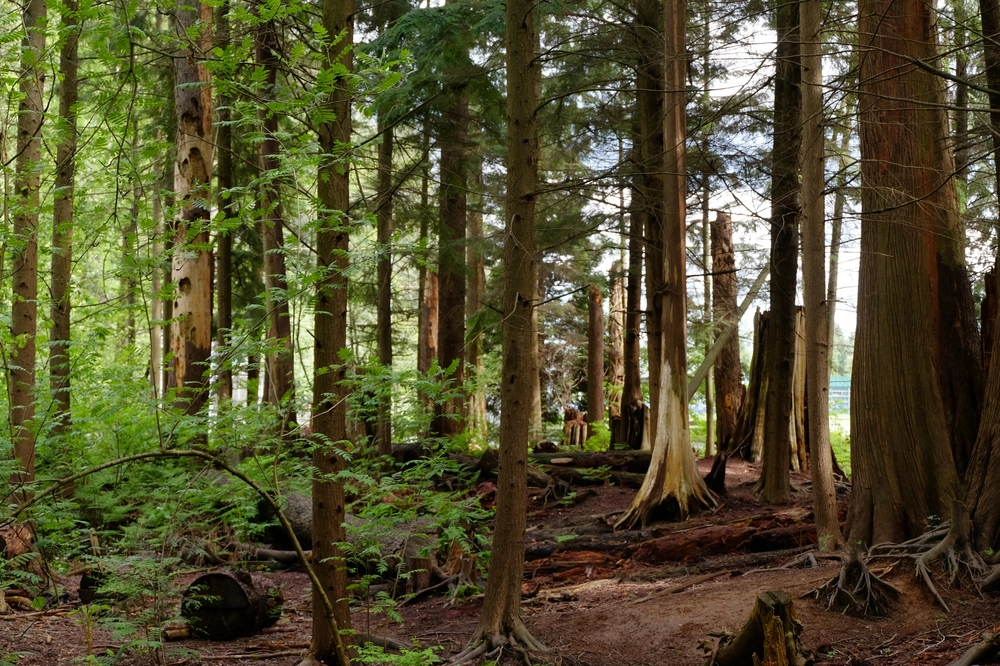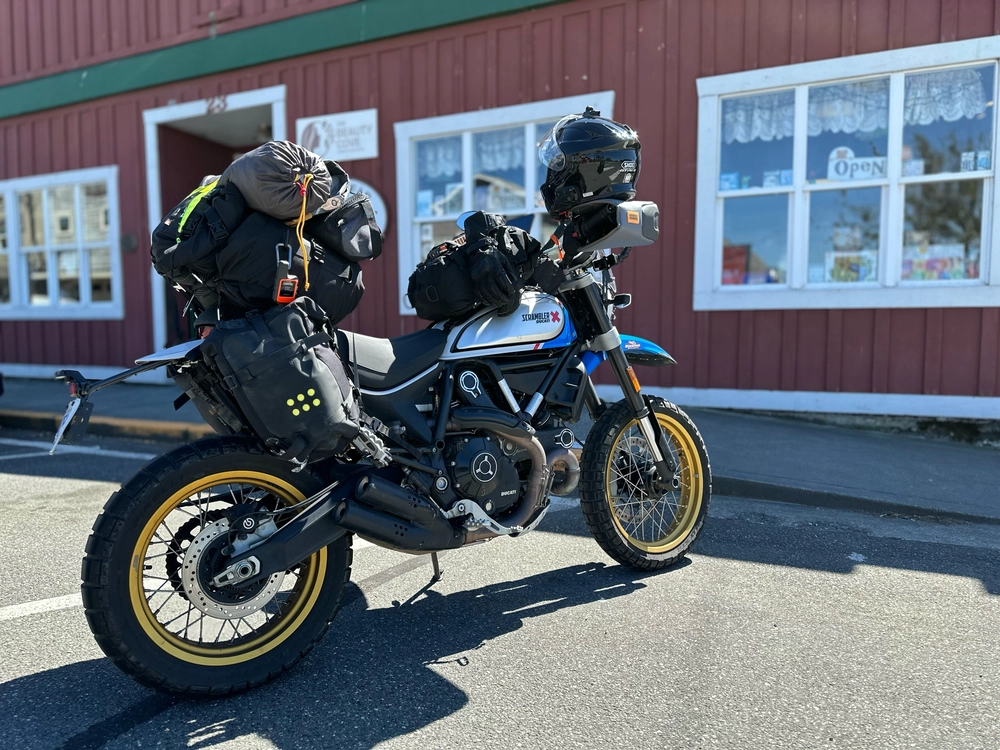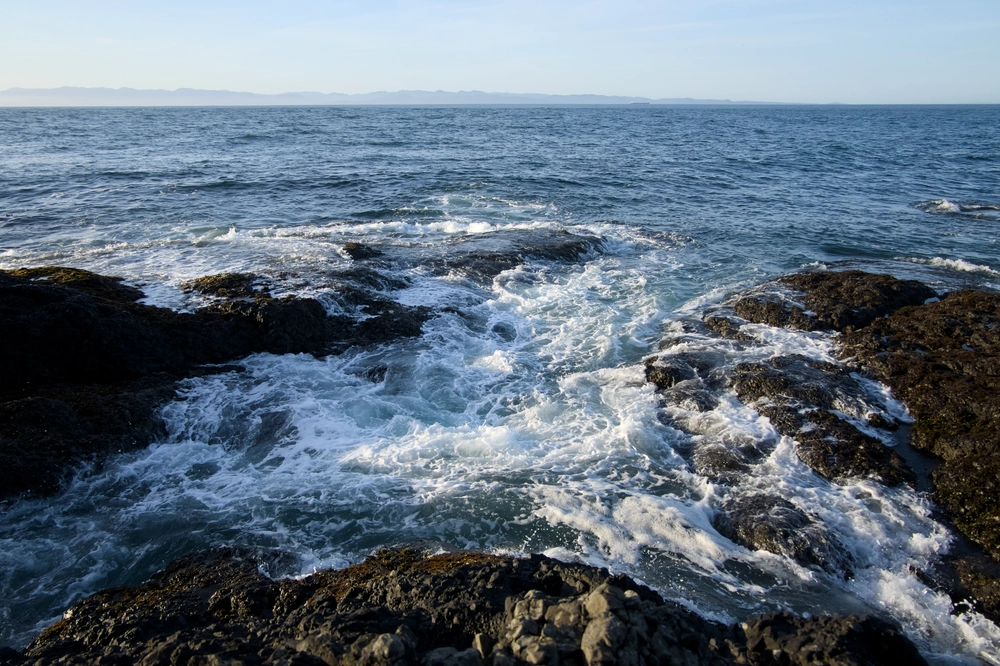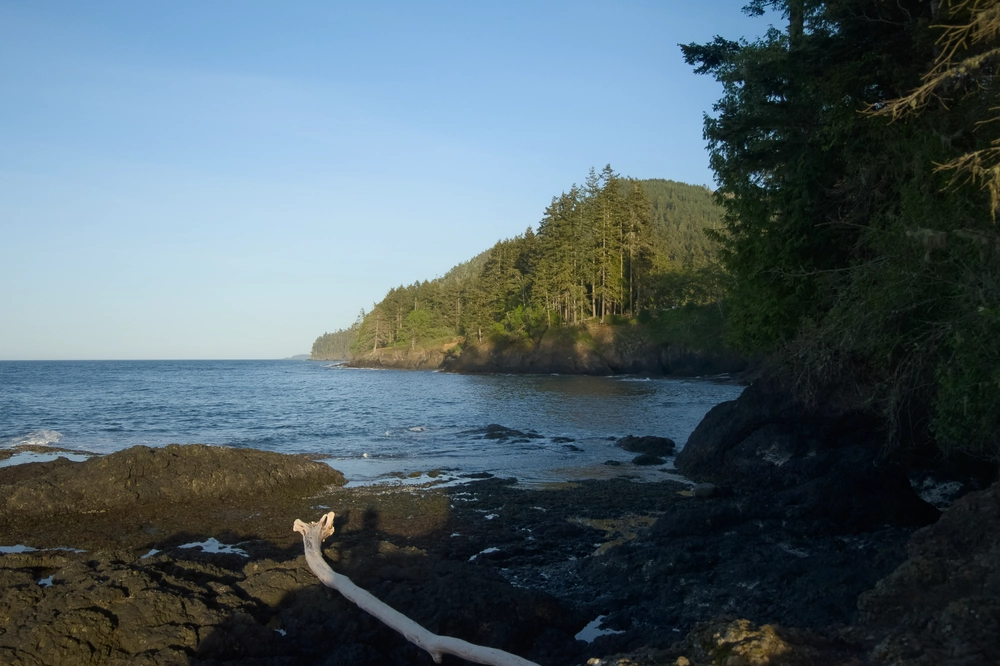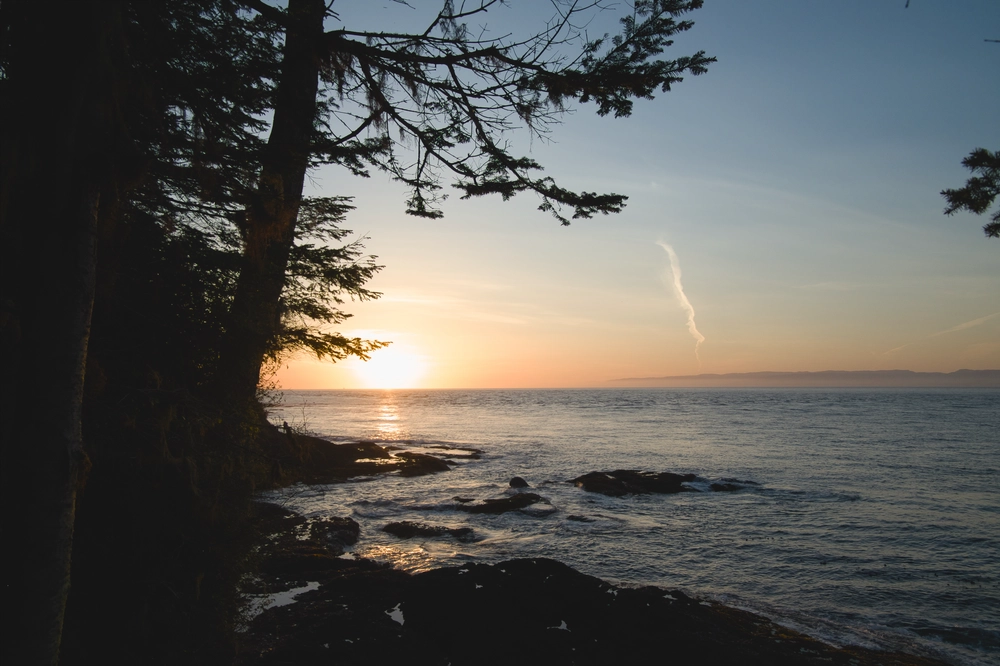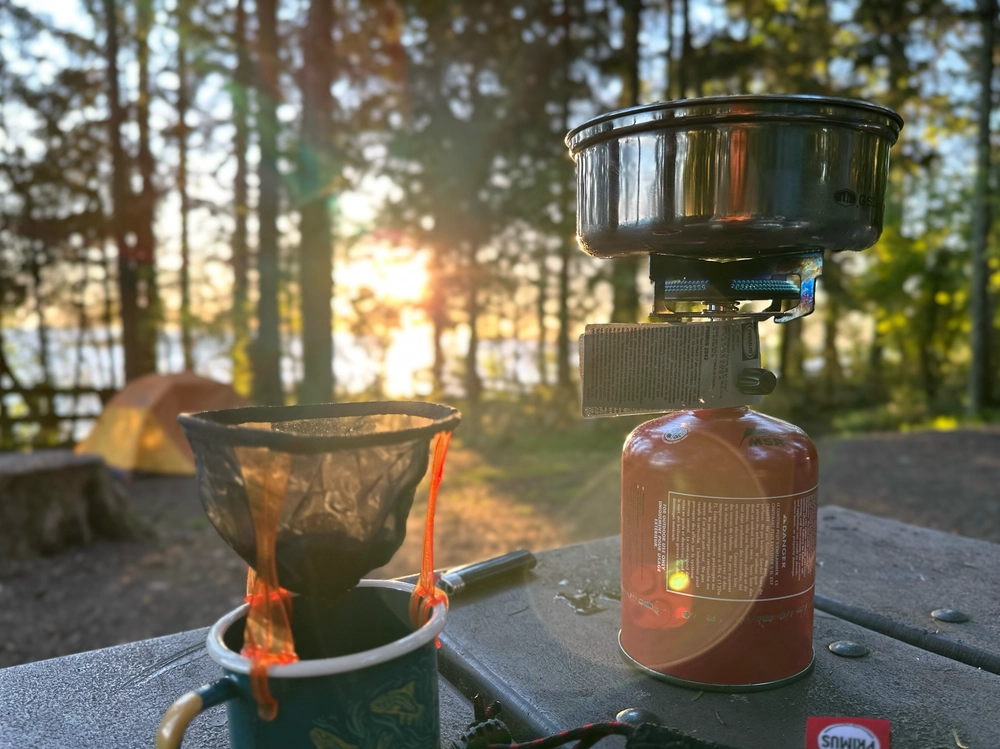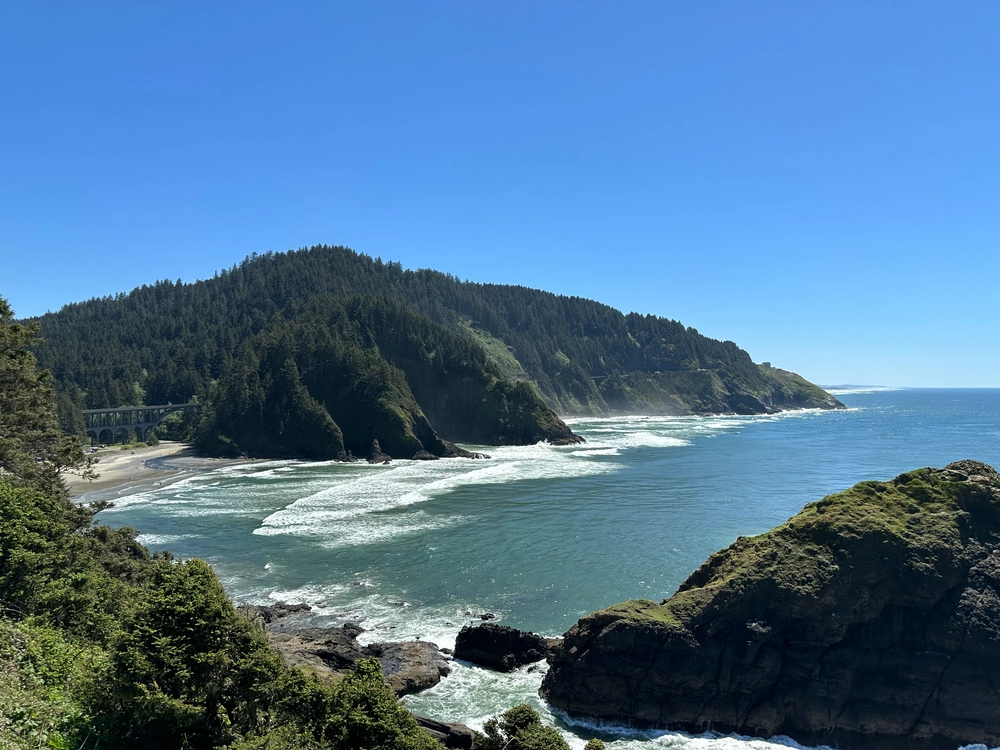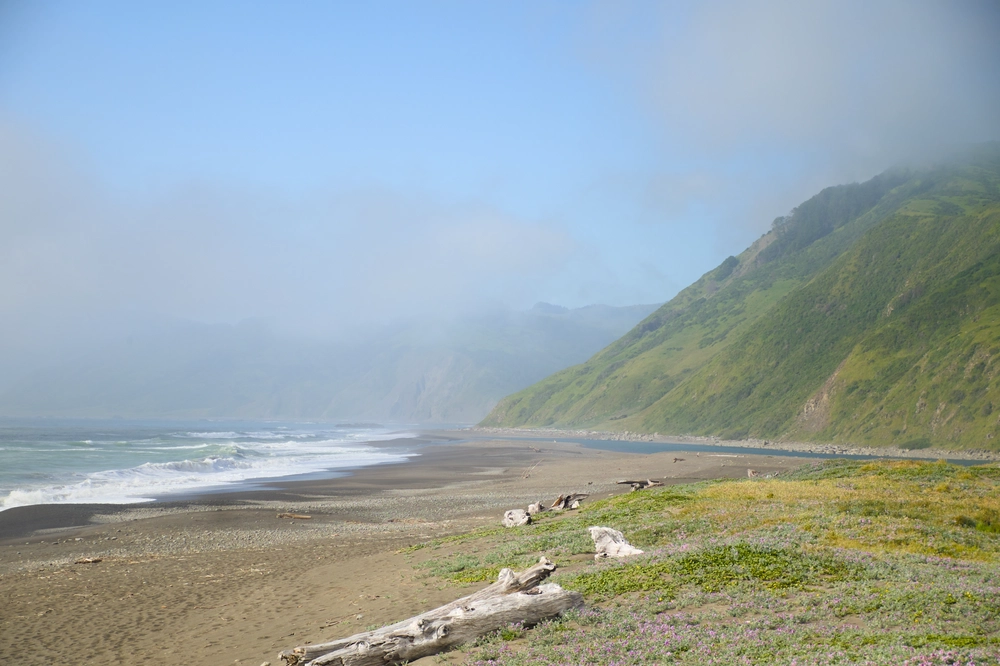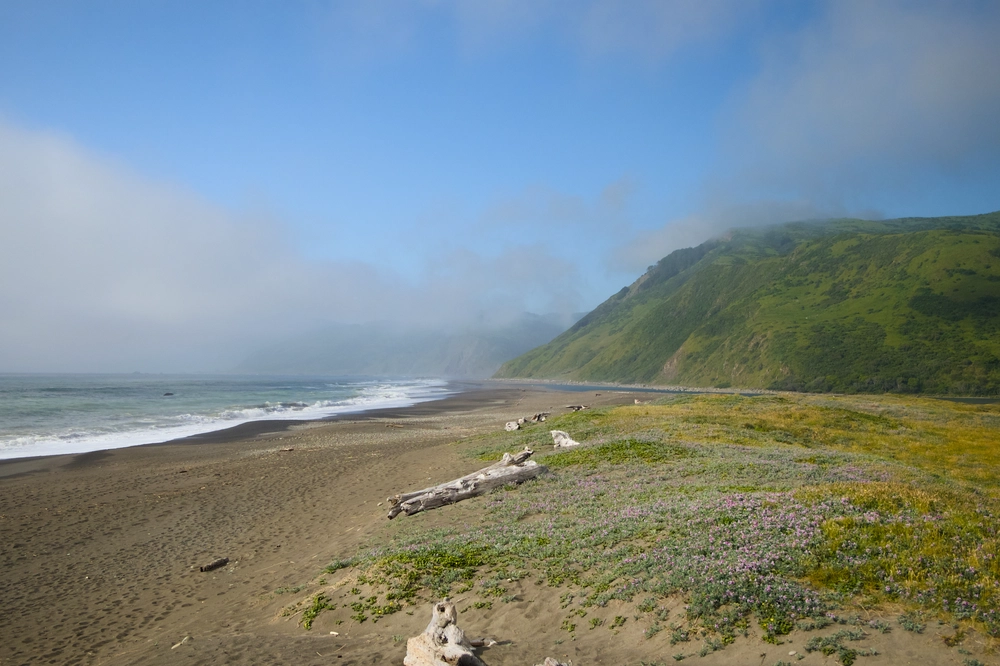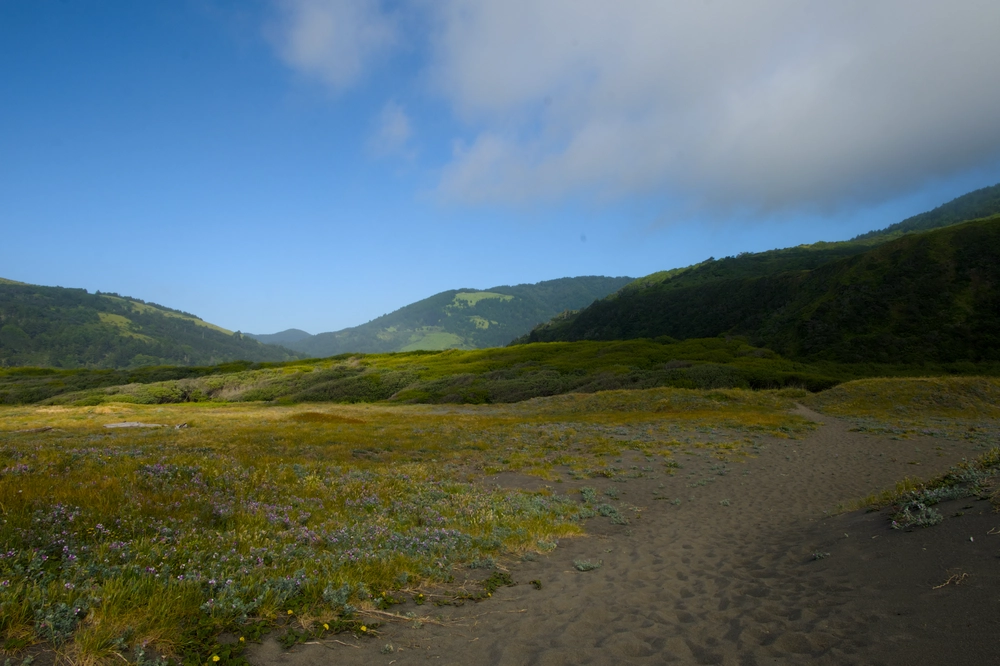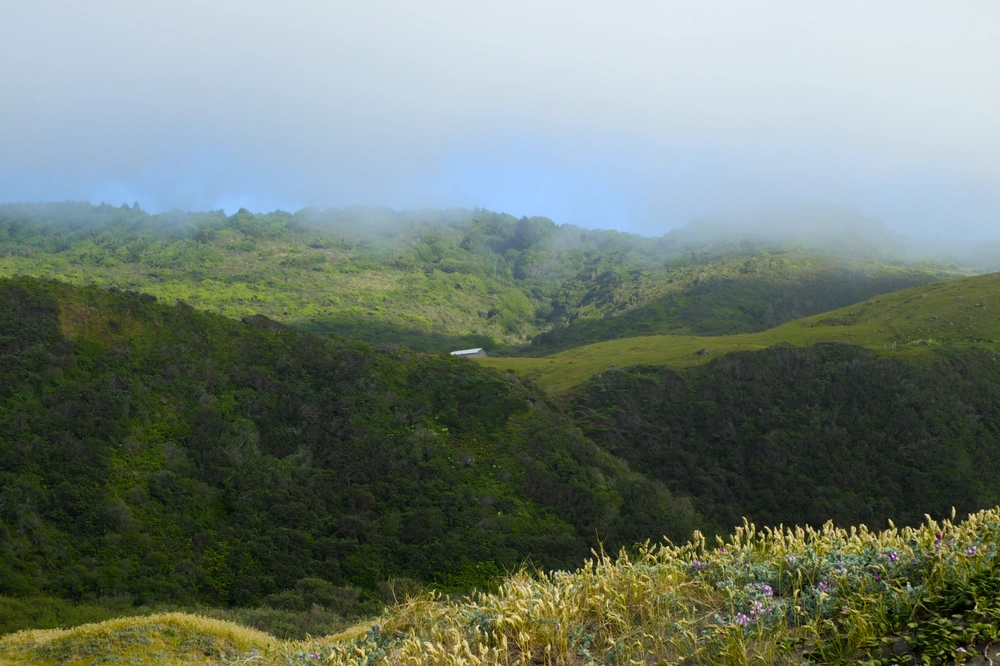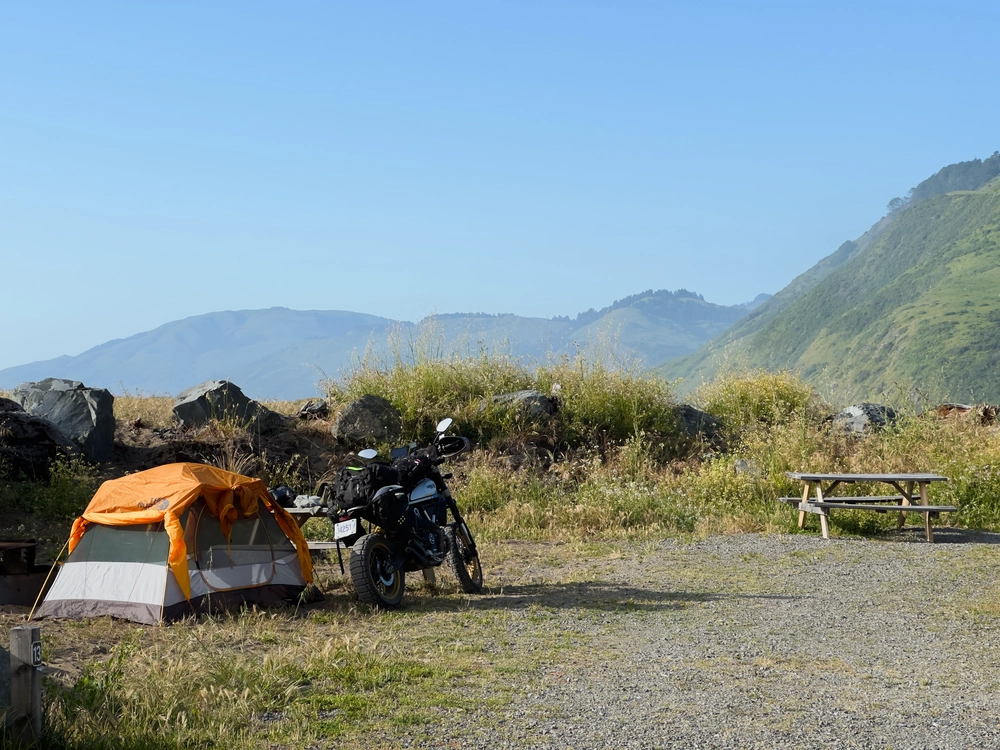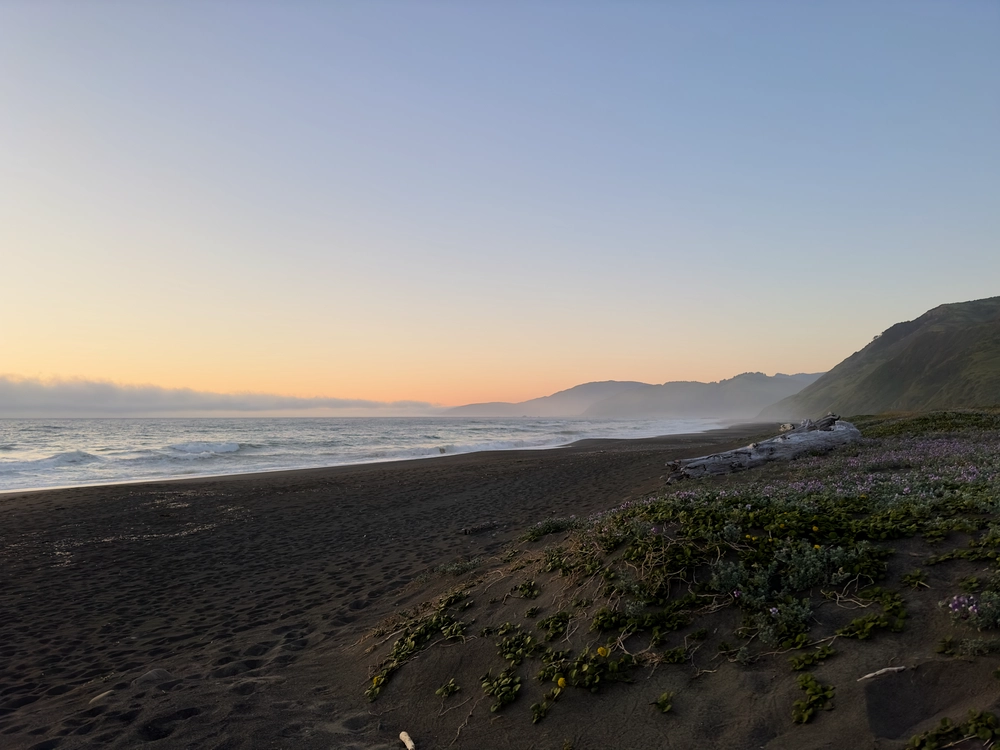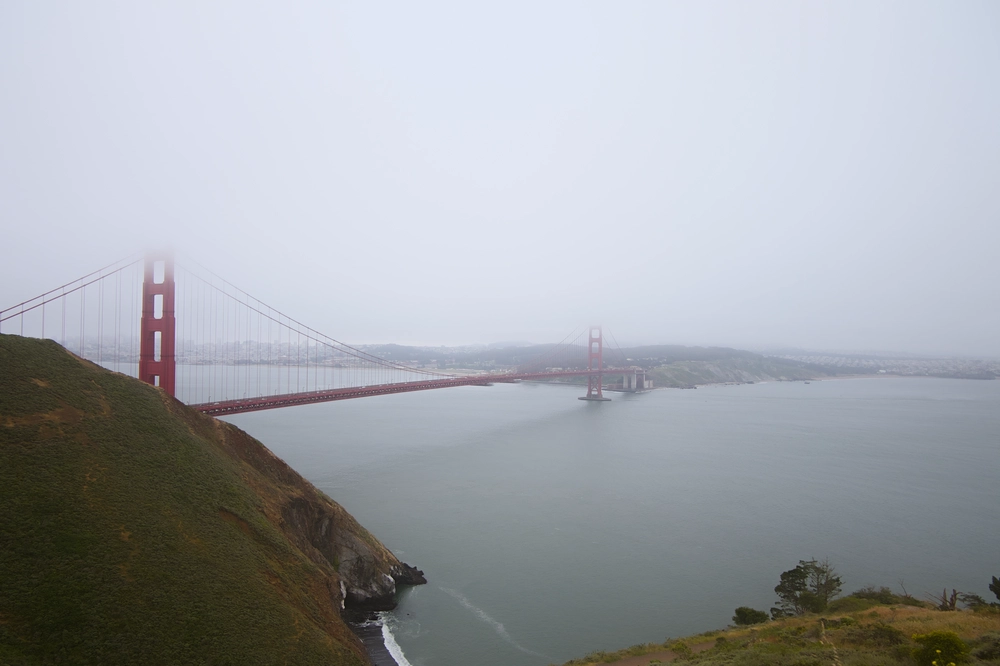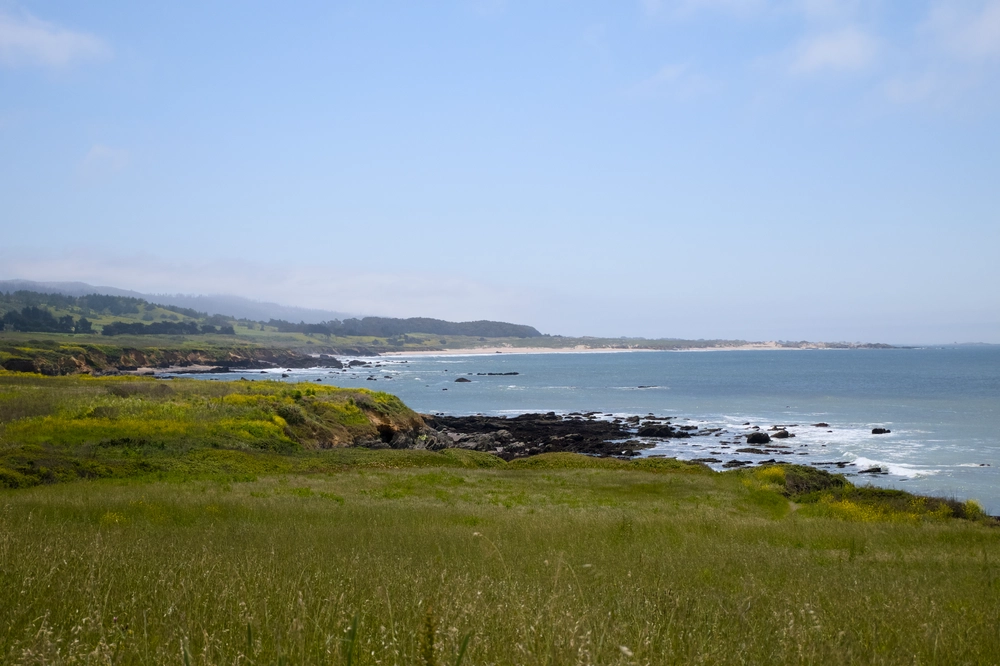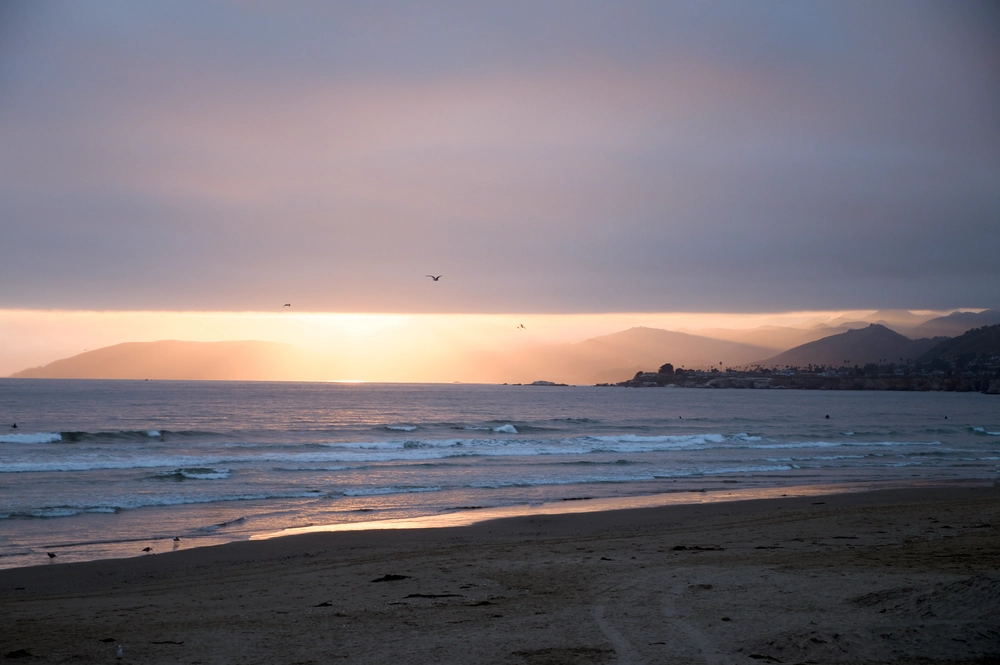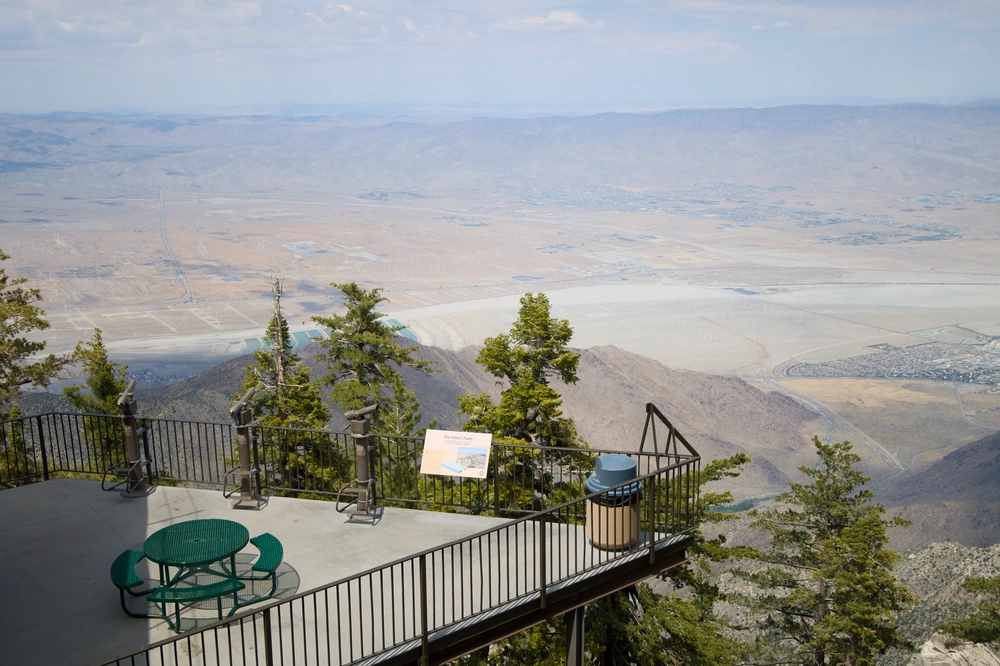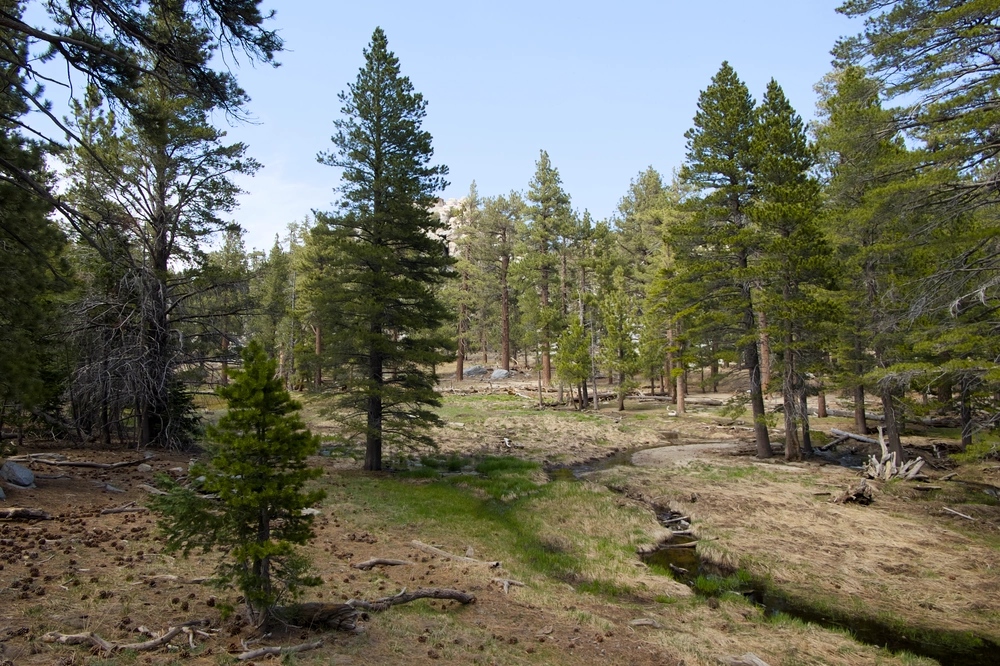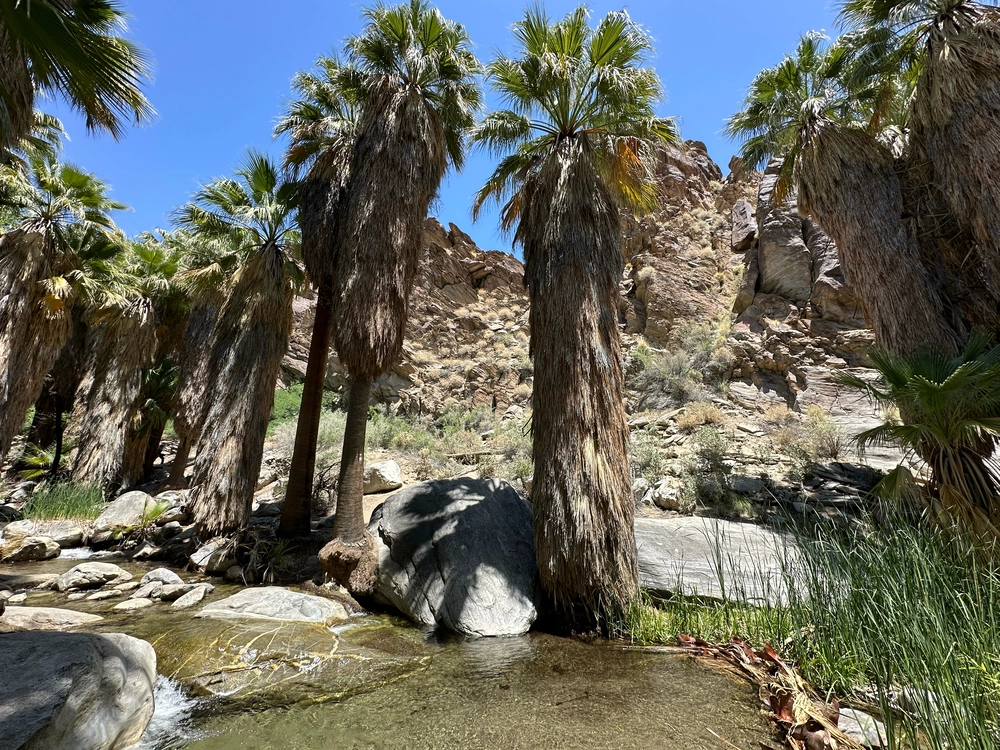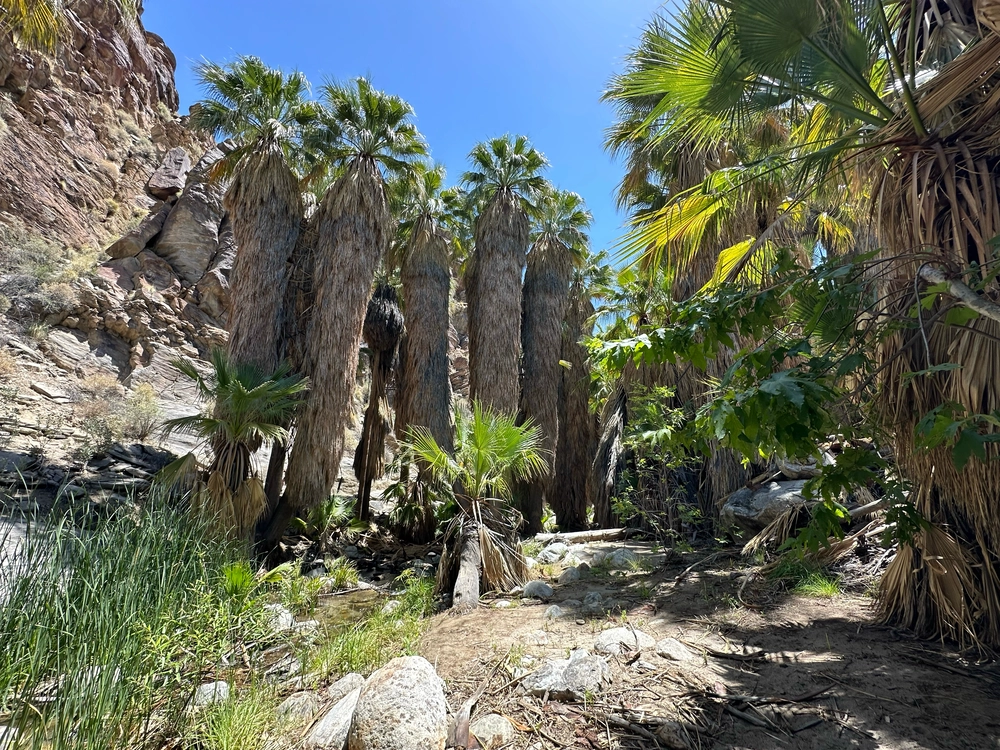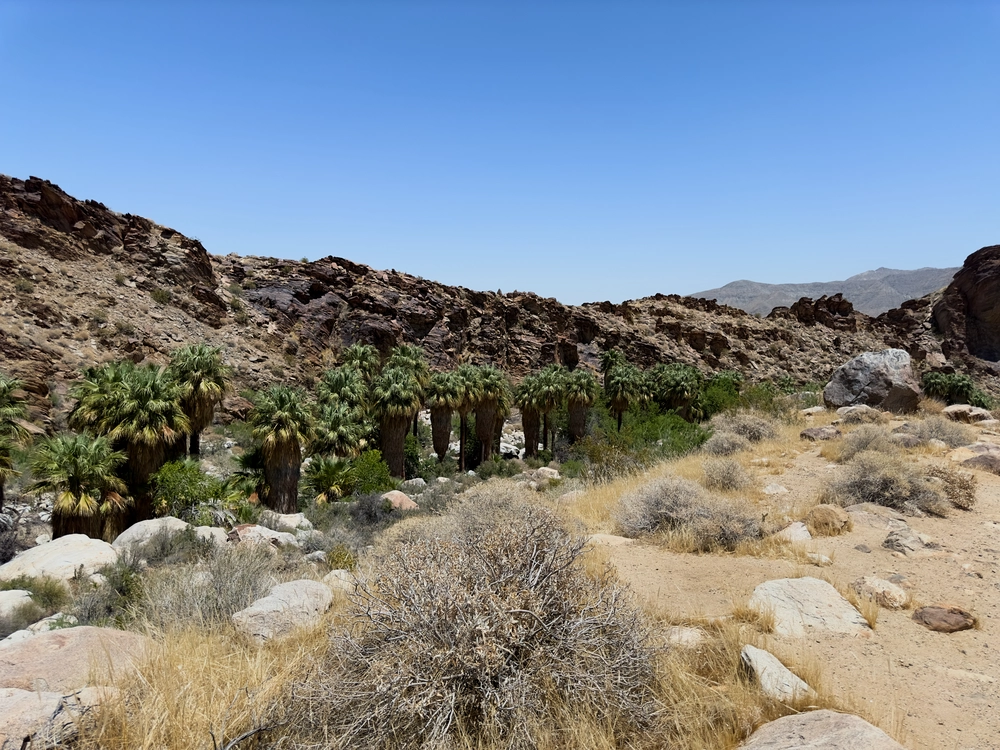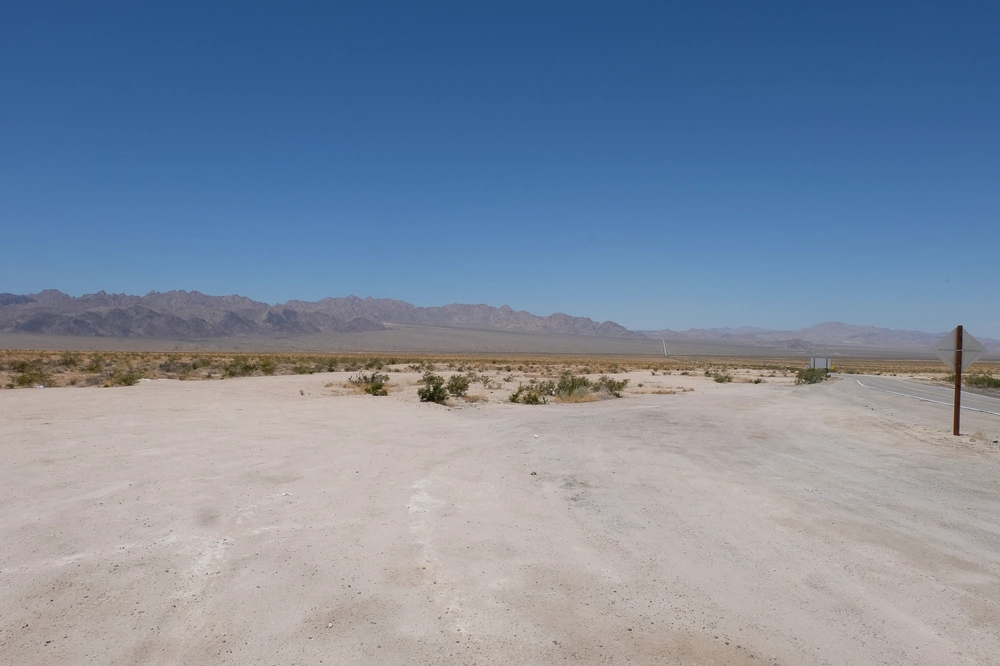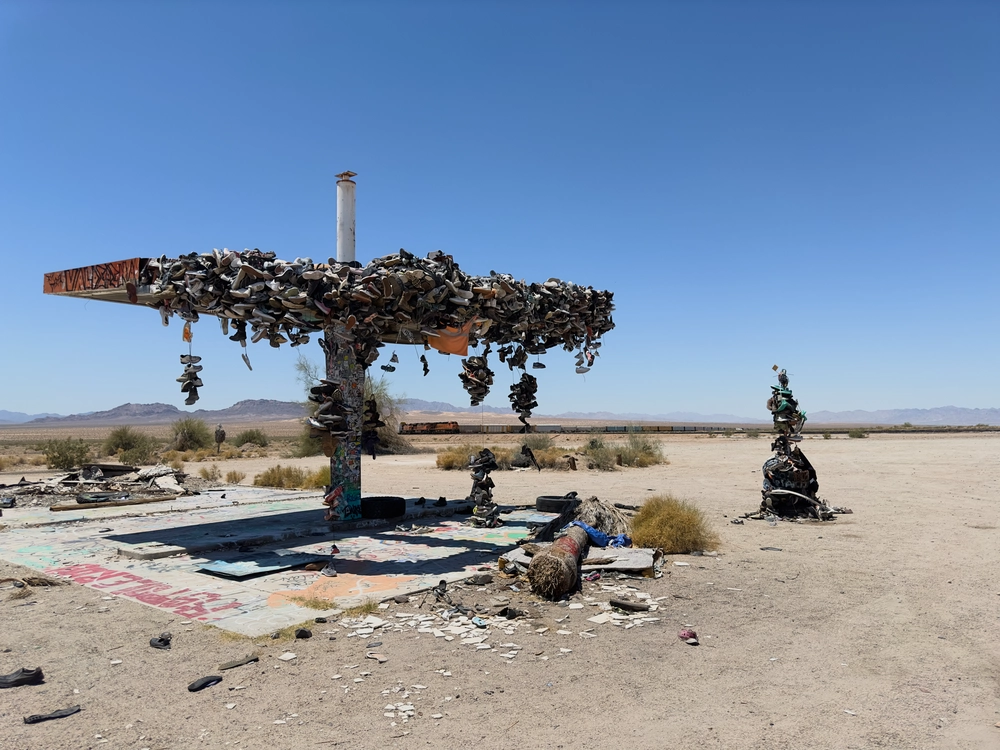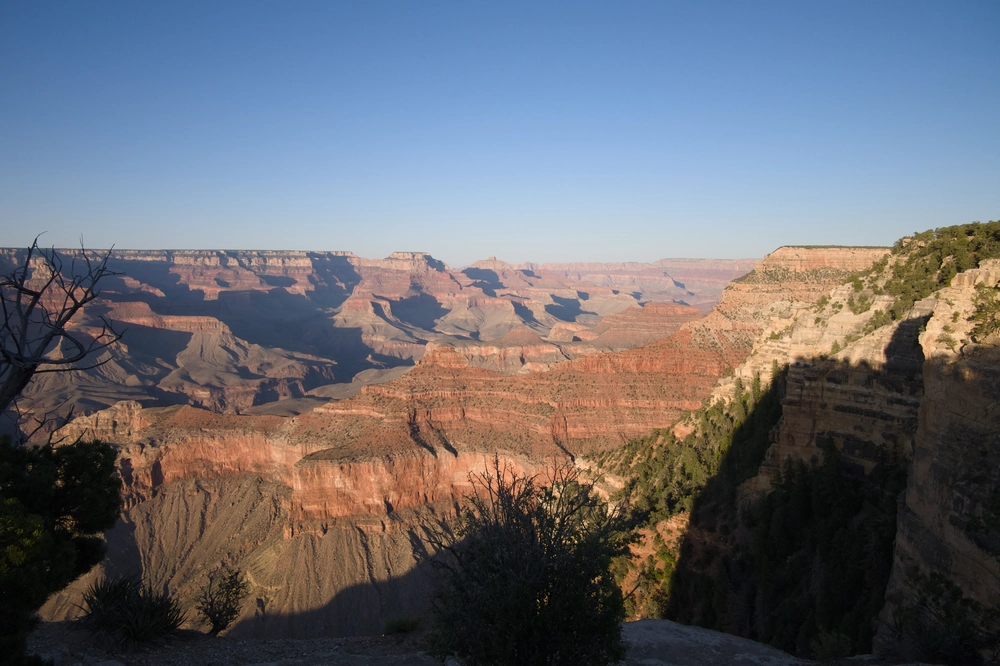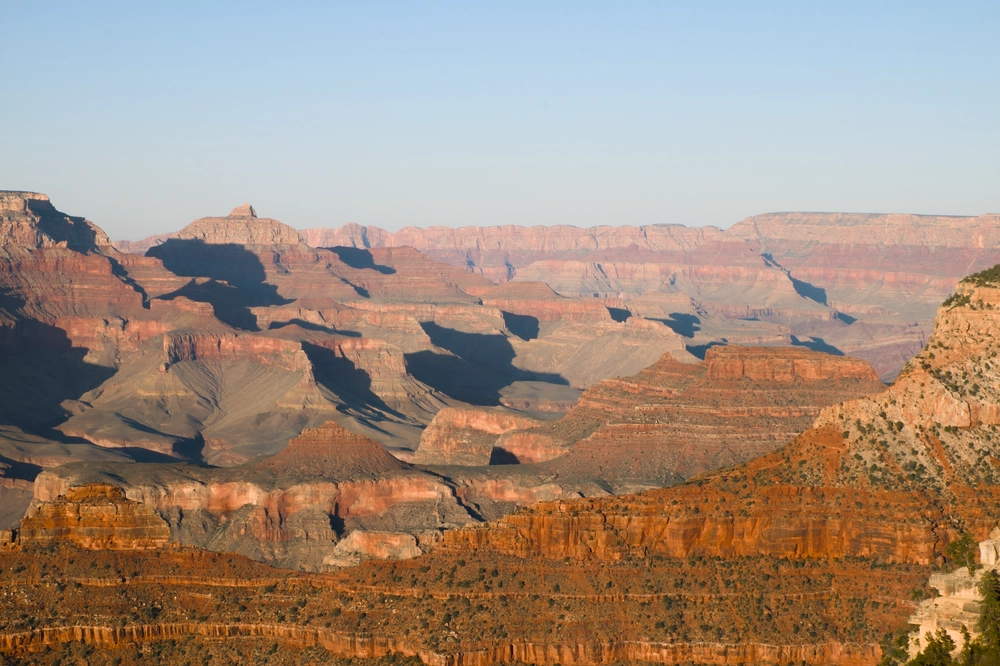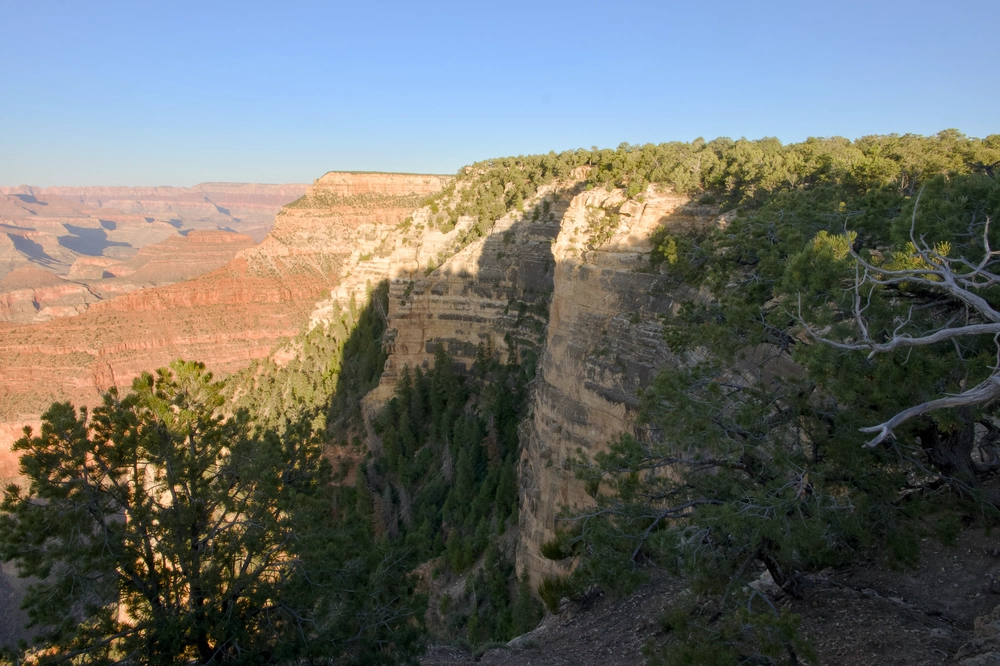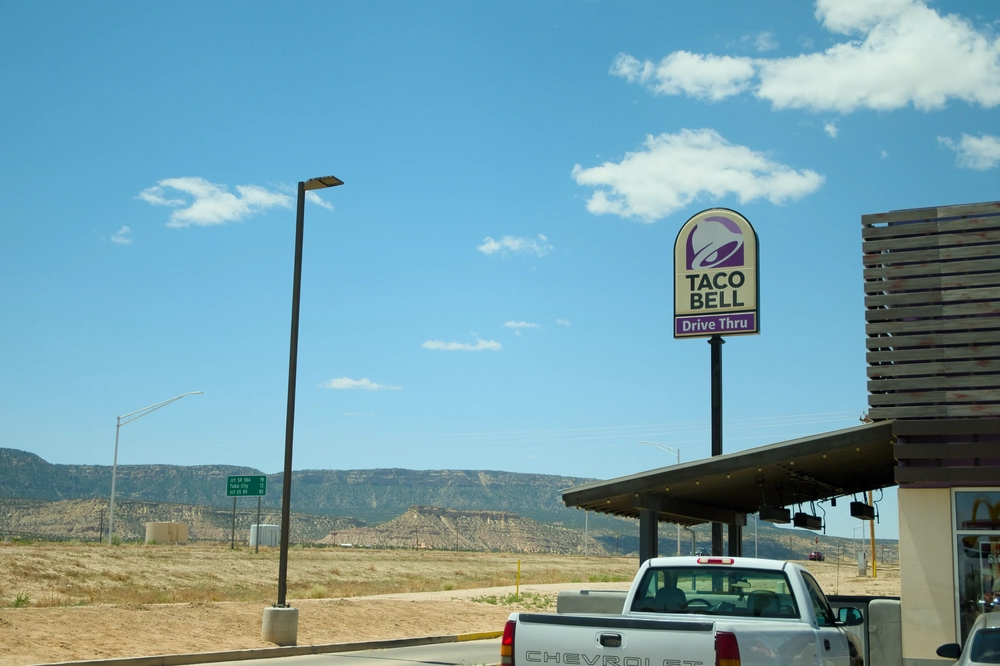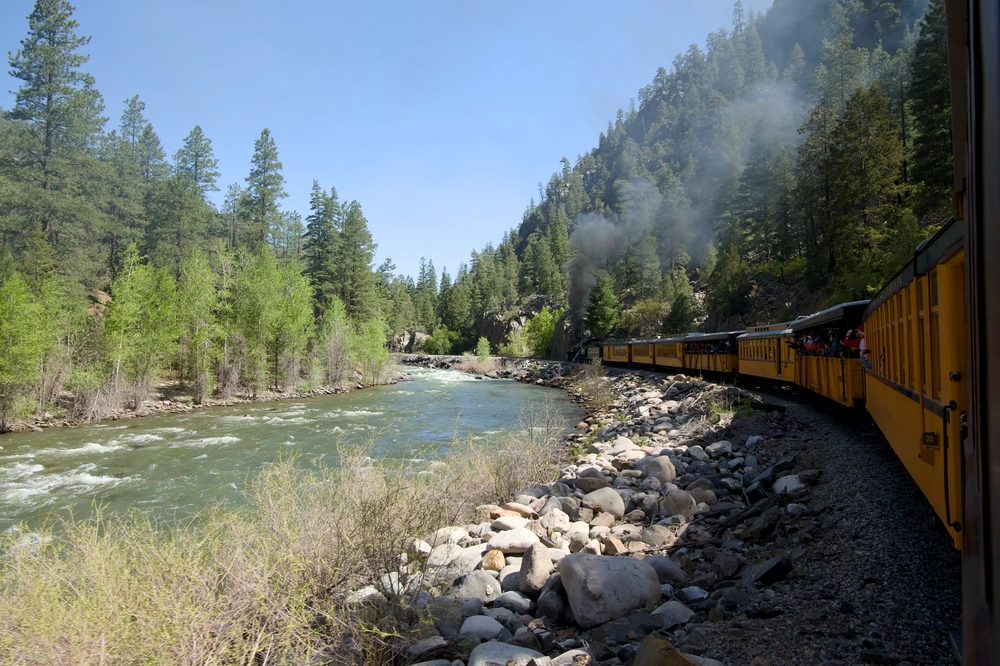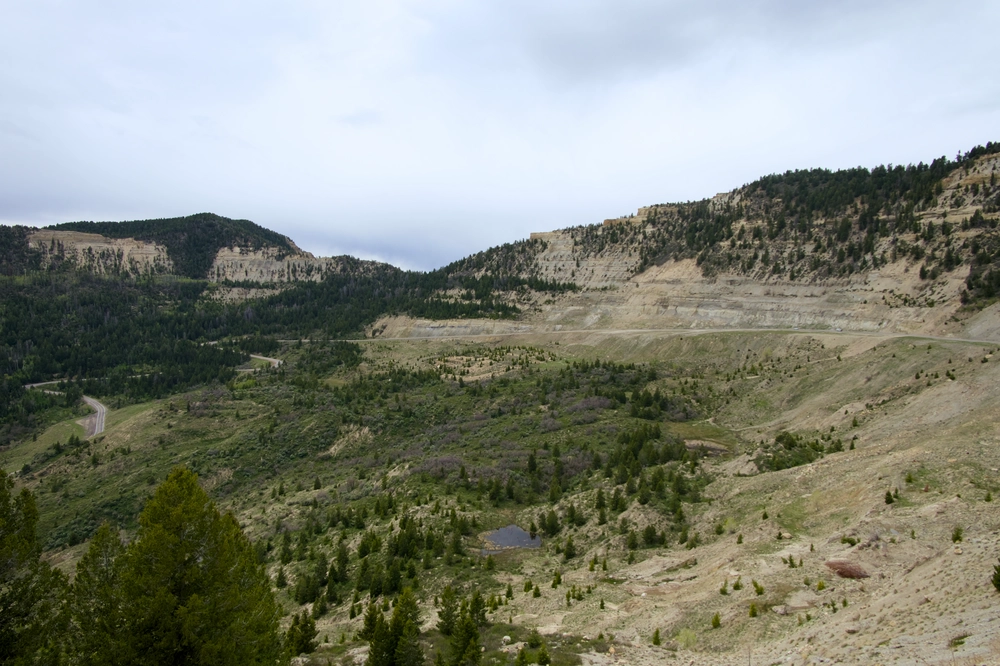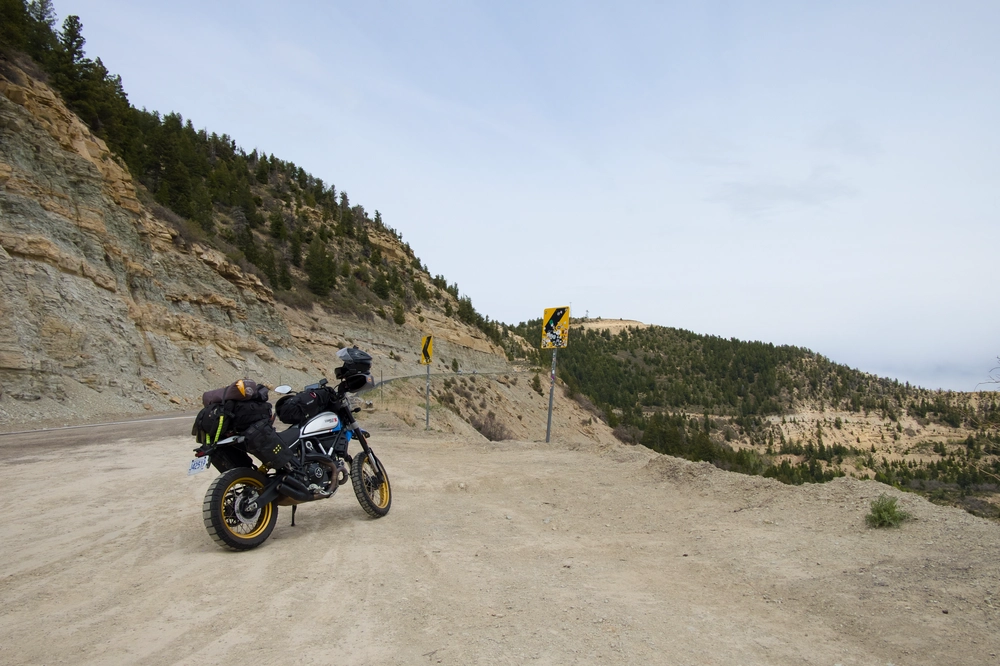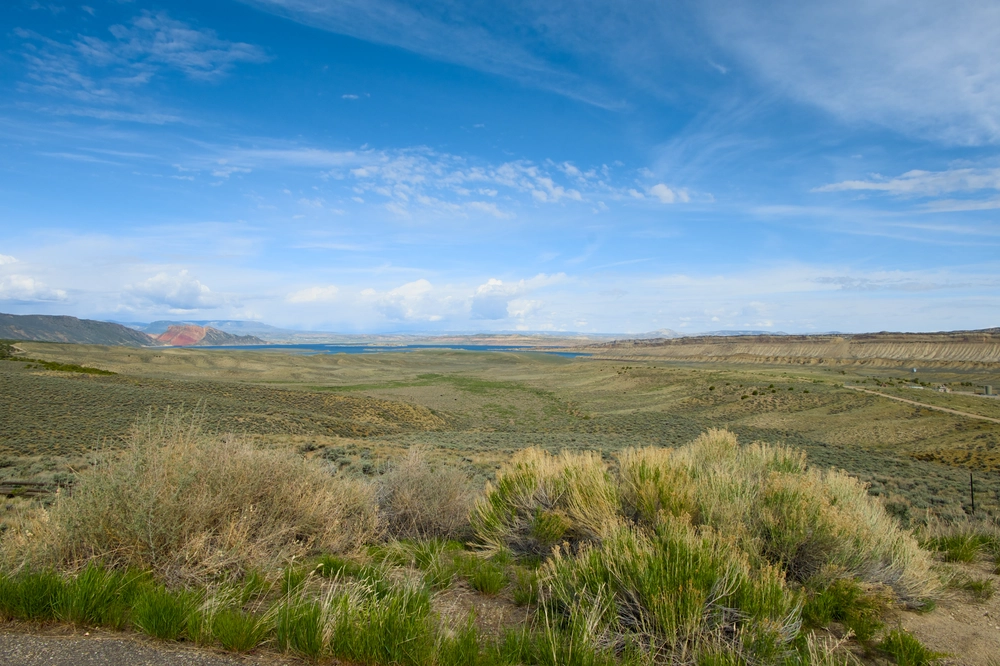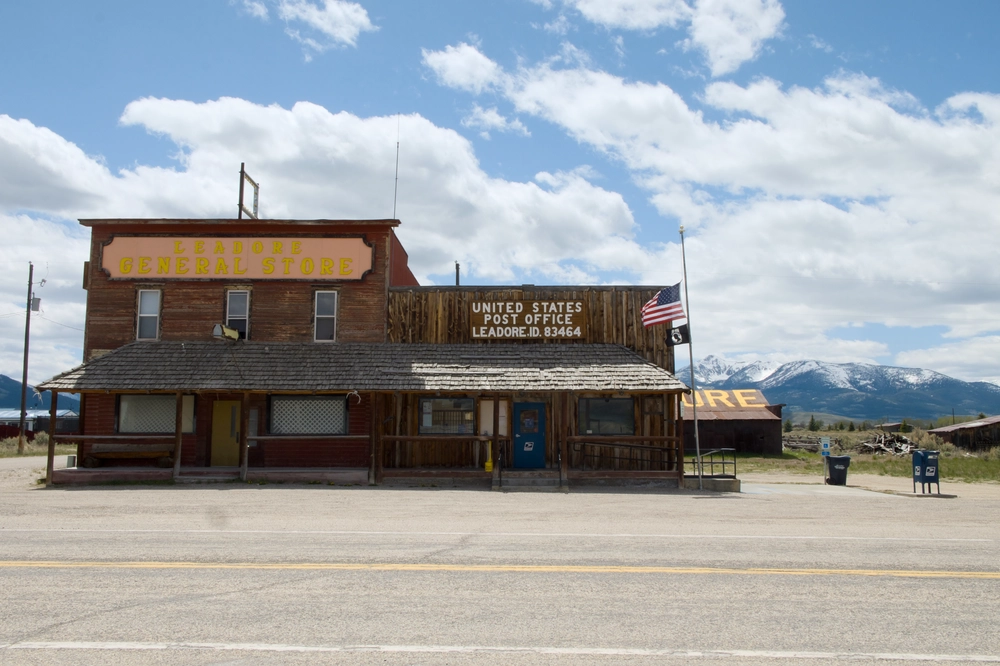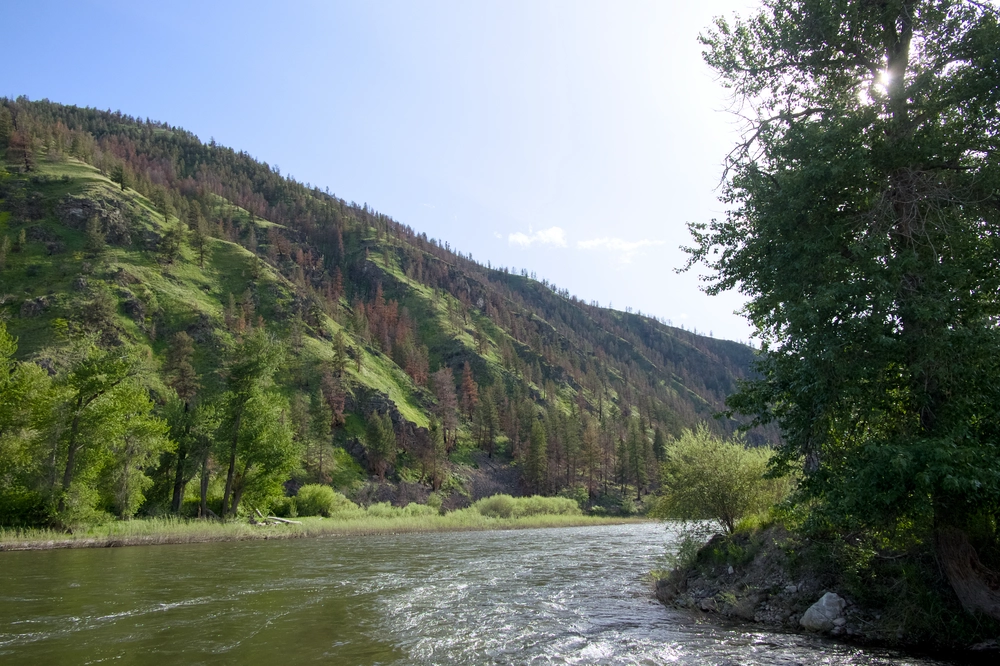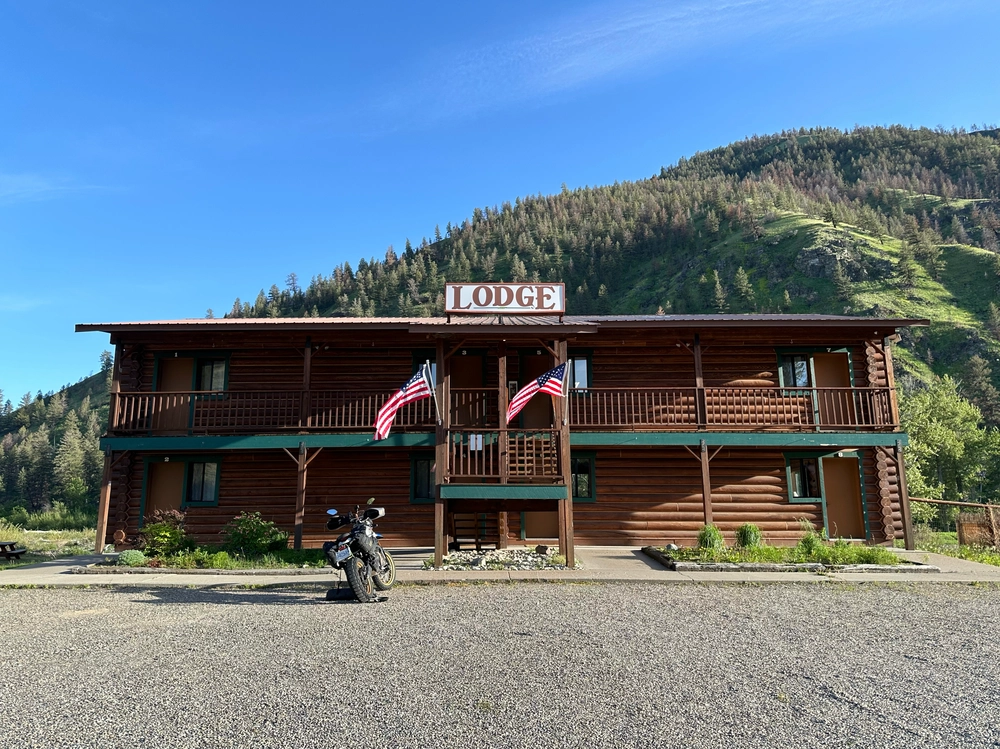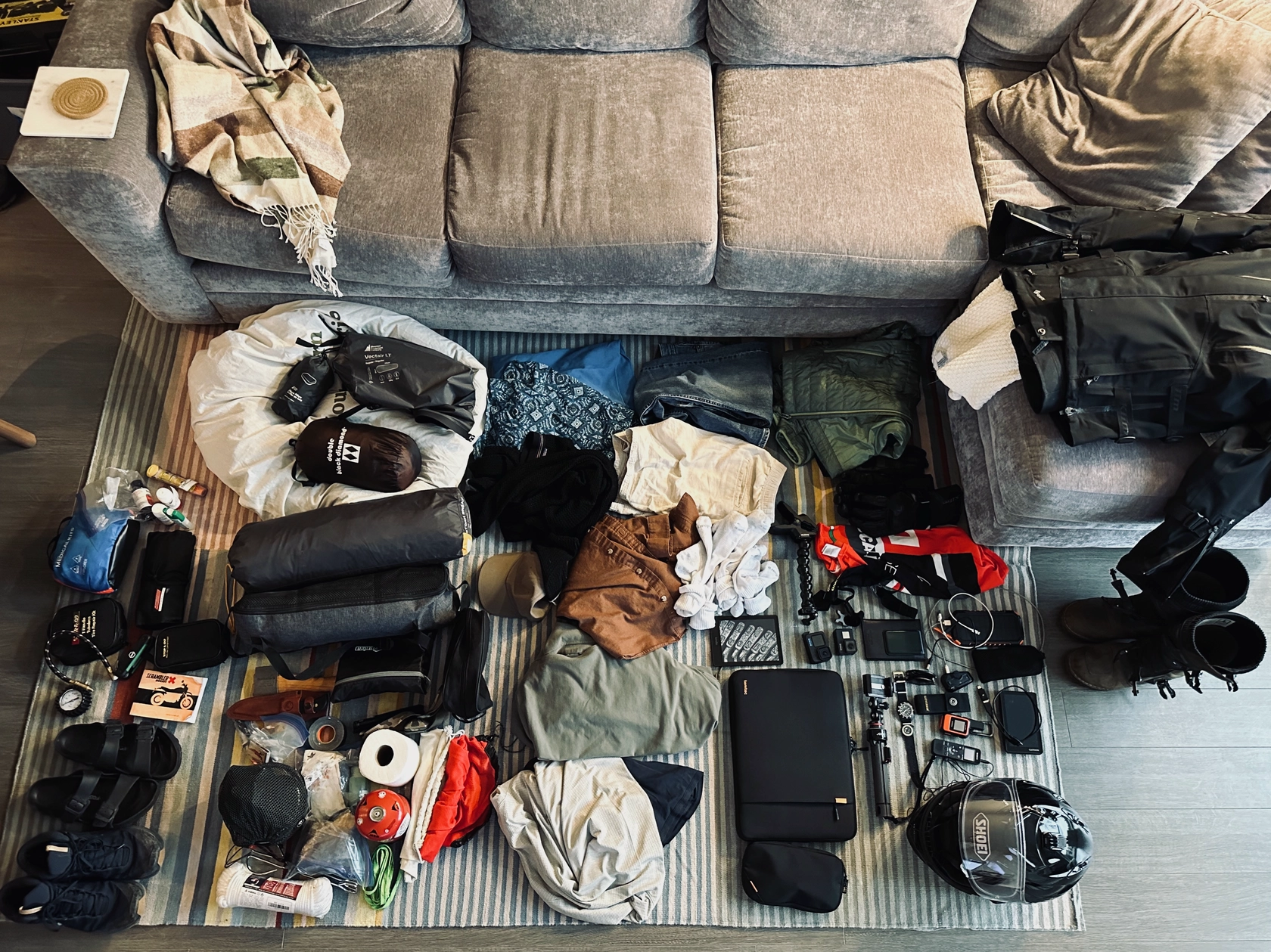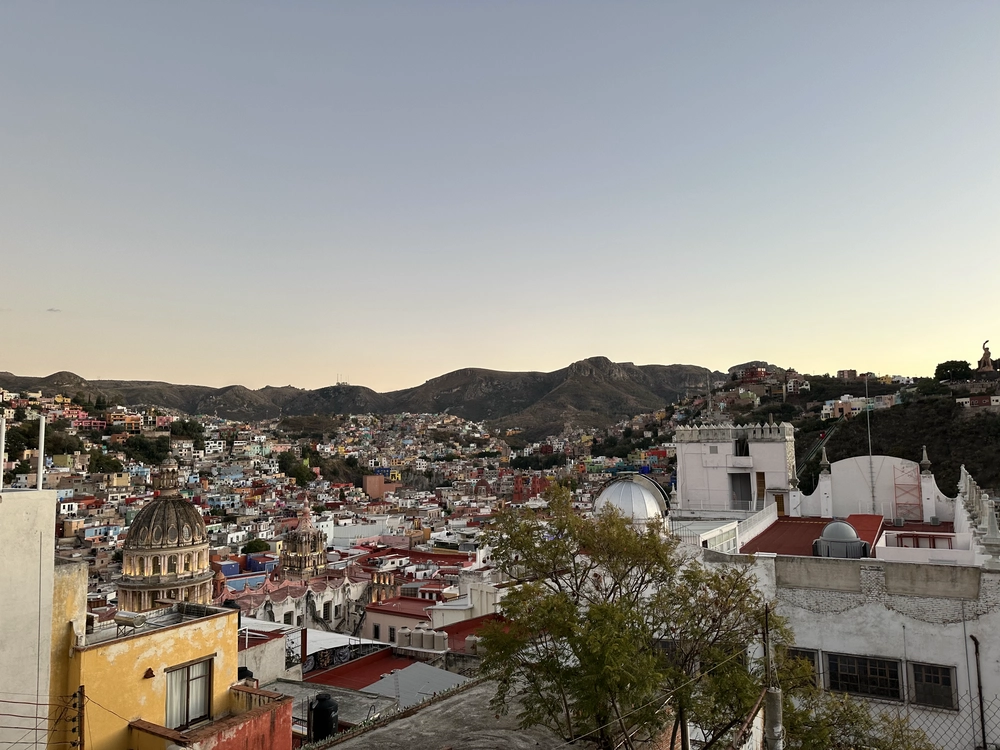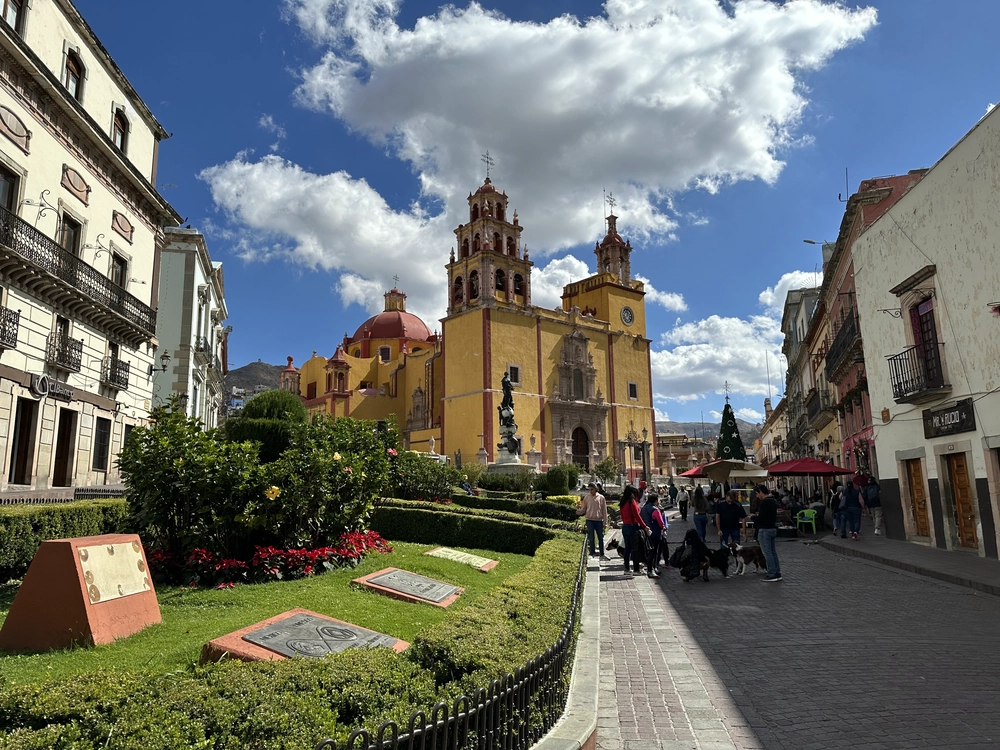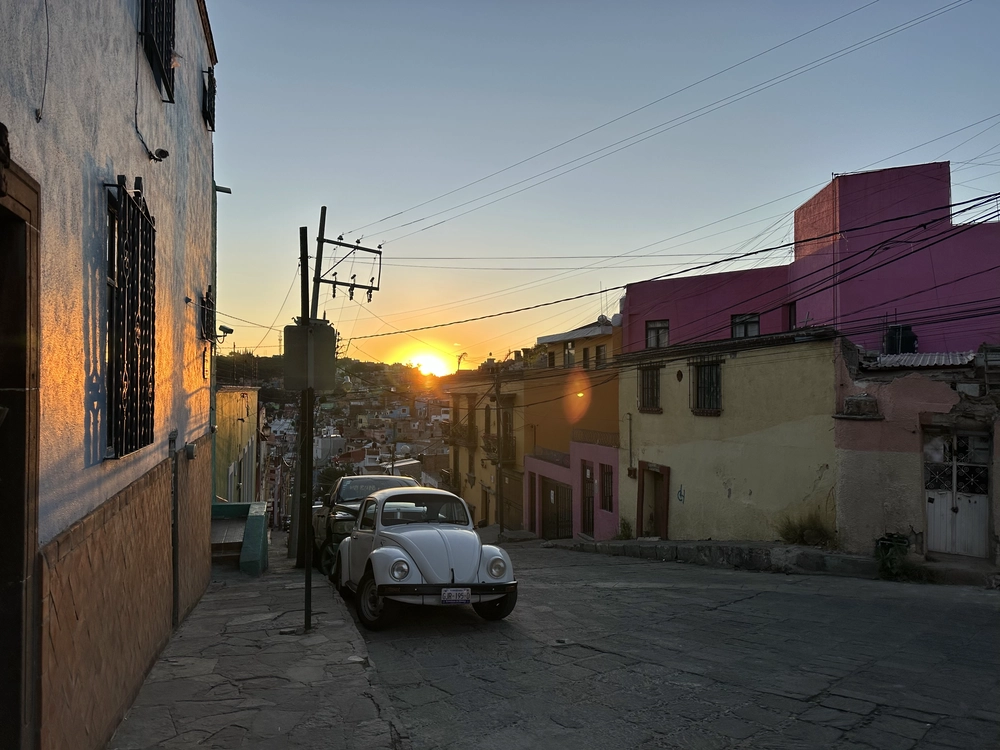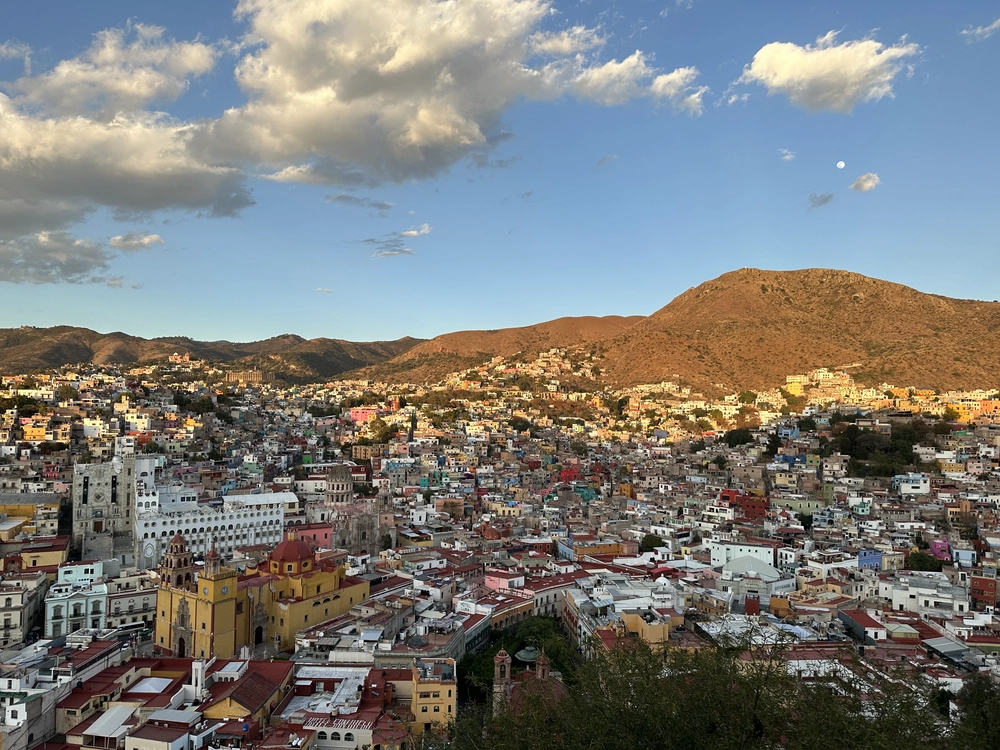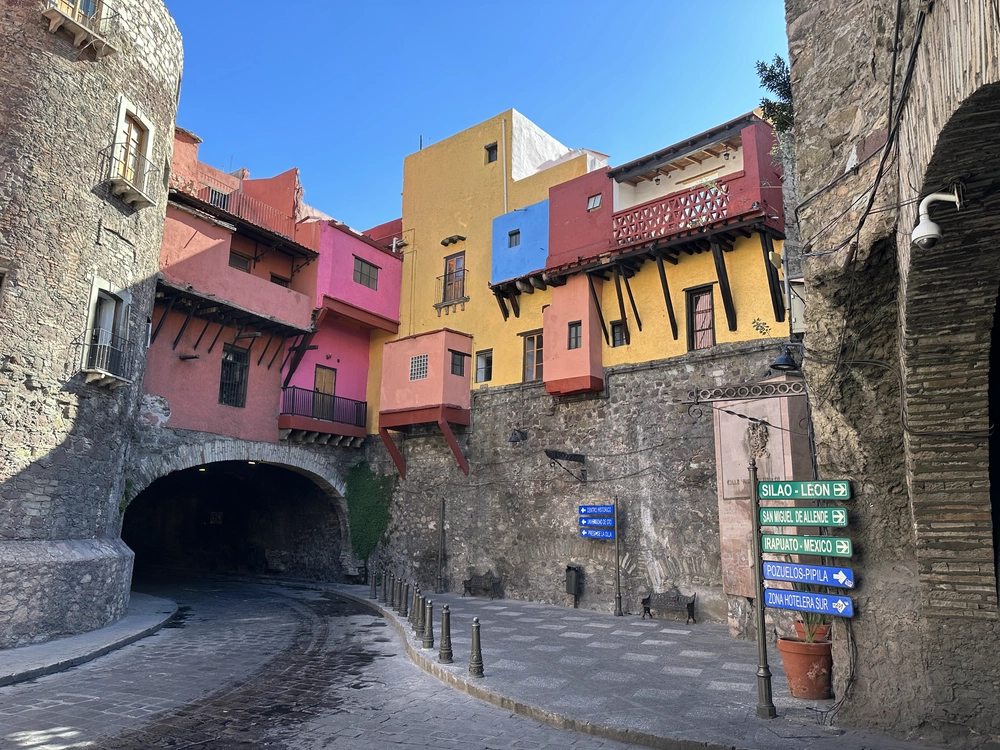Lessons learned about motorcycle travel
Part of the Far West 2024 series.
I’m a member on an old-school overlanding forum called Horizons Unlimited which is full of folks who’ve ridden their motorcycles to every corner of the earth. When I threw my itinerary for Far West out there to seek advice, one of the old-timers opened his comment with this:
“I’m having some difficulty imagining your trip as it’ll unfold on the ground. You’re covering a lot of ground, but don’t appear to be actually seeing very much, mainly because so much of what’s worth seeing along your route requires either long side trips, getting off the bike and walking around, or both.”
— markharf, The HUBB
I responded to the effect that I knew it was an aggressive itinerary, but three weeks was all I could pull off and that I’d have to make do. It was a motorcycle trip after all—shouldn’t that be the main activity?
Ummm, no. Not really.
Lesson 1: Slack
To qualify this a bit:
- I still had a blast, and
- the somewhat impromptu 3 day hiatus in Palm Springs compressed the riding schedule to its limit, and I chose this tradeoff knowing it would make the ride more challenging.
But the wise man was right. I spent a lot of time riding past places that I would have loved to have spent a day or two exploring. The motorcycling, fun as it is, is not actually the point. Moreover, I didn’t leave any slack to accommodate unexpected issues like not realizing my chain was about to snap until I was stuck at the Grand Canyon. Oh, mistakes were made.
If I subtract the three days in Palm Springs, I covered an average of 380 kilometres per day. That doesn’t sound like much in the context of four-wheeled road trips, but they are big days on a bike when you’re avoiding the freeway. My Garmin estimated 5-7 hours in the saddle most days, and that’s before you factor in a fuel stop or two, lunch, points of interest, trying and failing to find a god-damn banana over and over again, and coffee breaks. There is also hard work involved—packing and loading the bike, setting up and tearing down camp where applicable, bike maintenance, sitting around in laundromats, on and on. It was easily 10 hours of logistics each day. Sustainable for three weeks with a good break in the middle, but I wouldn’t do it this way again.
On the next trip, I will cut the target mileage-to-time ratio in half. 200 km per day average on an asphalt trip, less if aiming for dirt, which is the other thing I would have done more of if I had had a more relaxed time budget. If you’re using this as a guide it’s important to note that these are overall averages, but I would aim to ride only 4 or 5 days each week, so the actual mileage on a riding day would be higher.
Lesson 2: Gear, parts & packing
I did alright in this department. You can see my packout in my earlier post: Packing Lucia for a four-season motorcycle camping trip.
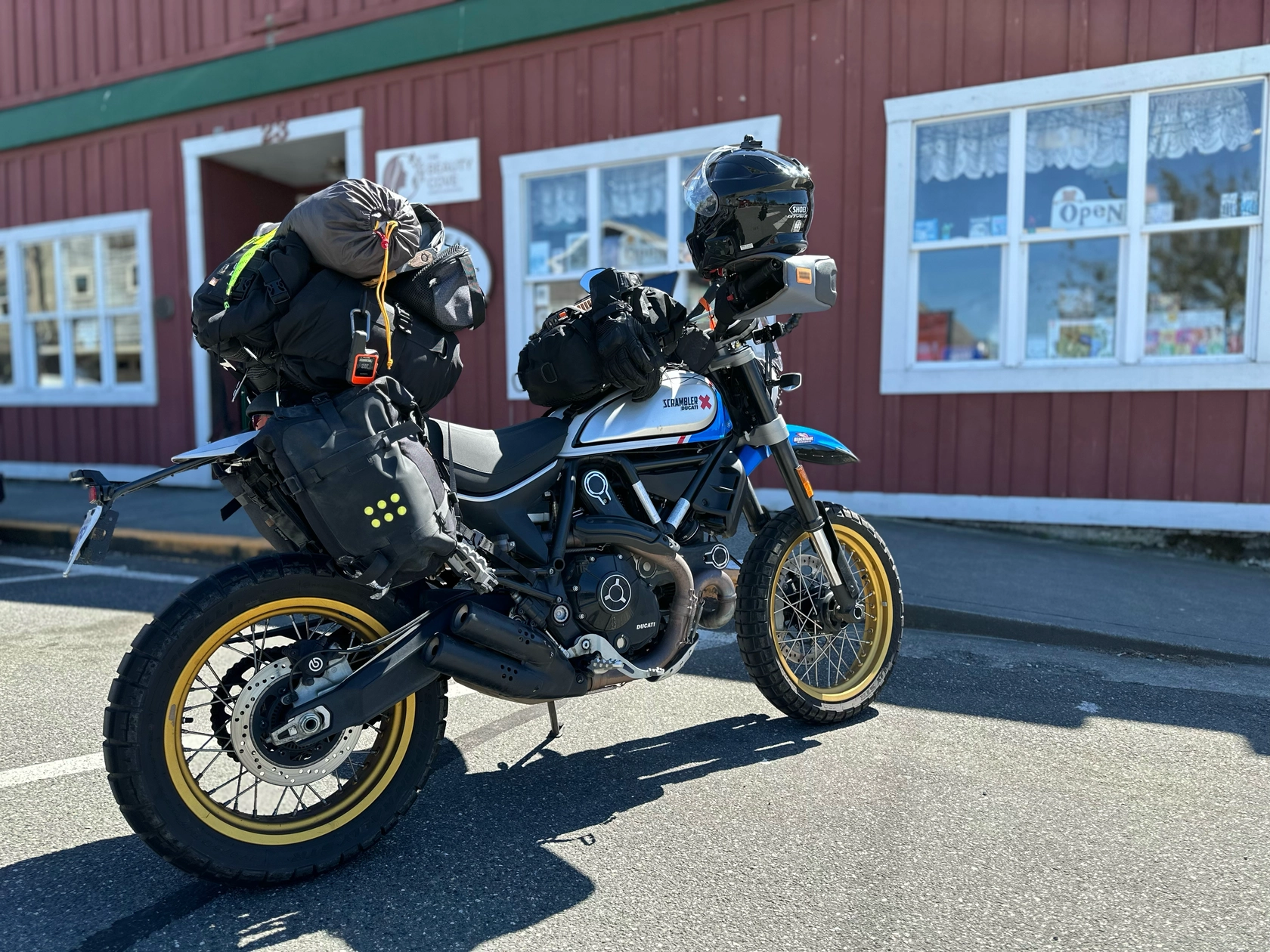
This all worked out okay. I can’t say enough about how solid Kriega bags are, and the best idea I had was to stick a mountain bike handlebar bag on the bars as a quick stash for random stuff like ferry tickets, GoPro batteries, cash/change, and ear plugs.
Next time I will look to swap out the 12 litre side saddles with the 18 litre variants that mount to the same base, as that is free real estate as far as the ride goes. I will scrap either the 10 litre or 20 litre tail/tank bag in favour of a 9 litre Kriega backpack. There is value in keeping your most important possessions on your person, and a camera mount on the shoulder strap would have been perfect.
The shoe situation was pretty dumb. I ended up bringing mid-top Arc’Teryx hiking boots, but I will invest in a more versatile and less bulky pair of all-purpose trekking shoes on the next trip. I felt quite goofy wearing hiking boots while eating a $55 scallop risotto in Palm Springs when we went out for a nice dinner.
Other minor adjustments I would make:
- More compact and better quality cookware;
- Smaller fuel canister;
- Small size, leak proof containers for oil, spices, etc;
- Don’t need a roll of toilet paper unless you’re truly wild camping—a funeral-sized Kleenex pack will get you out of a bad situation;
- Rope? Come on. I literally brought 90 feet of rope. What the actual fuck did I think I was going to need 90 feet of rope for;
- Jeans are needlessly bulky and heavy—I’d probably go with a lightweight, versatile pant;
- iPad wasn’t needed since I had a laptop and a kindle already;
- I’m still not sure about the hatchet. I only lit one fire, but it was nice to have the option, and there’s something about having one in parts unknown that makes you feel safer.
One thing I found hilarious when packing so tightly was how quickly I came to treasure single serve items like a good napkin stack or zip-lock bag. These can only be bought in household size packs which aren’t so helpful when you just need, like, one.
As for parts and tools, I made the boneheaded assumption that, America being America, I could buy what I needed if, when and where I needed it. Not the case. Not when you’re up against the clock (see previous section).
While I had the basic set of tools, what I ultimately needed and didn’t have was a socket wrench pair large enough for the wheel axle (needed to adjust chain tension), and a spare chain. I will be adding those to my toolkit and bringing spares for all bike-specific, consumable/breakable/bendable parts next time (chain, brake pads, oil filter, air filter, shift lever, brake levers and clutch lever). It also goes without saying that I won’t ever again start a 7,000 km trip on a chain that’s almost EOL. As I said—boneheaded.
Lesson 3: The world is immense
I did some things badly. But I did a lot of things well. I climbed a sketchy hill above a lighthouse to get a proper view of the mighty Oregon coastline. I found my favourite place in the world at the northern trailhead of California’s Lost Coast. I rode the Pacific Highway to Santa Monica and got to see it in all its splendor before the terrible fires took so much from the people there this week. I split lanes on the freeway in Los Angeles and off-roaded in the Arizona desert. I took a 6-hour roundtrip train ride on the oldest operational steam engine in America. I rode on the Million Dollar Highway in Colorado, through a 1 in 150 year Mormon Cricket swarm in Utah, and through hail in Wyoming. I had the time of my life, so far.
Ted Simon, in his 1979 book Jupiter’s Travels, wrote this about motorcycle travel:
“In spite of wars and tourism and pictures by satellite, the world is just the same size it ever was. It is awesome to think how much of it I will never see. It is not a trick to go round these days, you can pay a lot of money and fly round it nonstop in less than forty-eight hours, but to know it, to smell it and feel it between your toes you have to crawl. There is no other way. Not flying, not floating. You have to stay on the ground and swallow the bugs as you go. Then the world is immense.”
Travelling this way, you don’t have the option to grab a coffee for the road. You get it to stay, and you sit with the locals in their favourite cafes, and you take it slow. They come talk to you because everyone is curious where you’re going and how far you’ve come. None of the smells pass you by.
Here’s to the next one, Ted.
